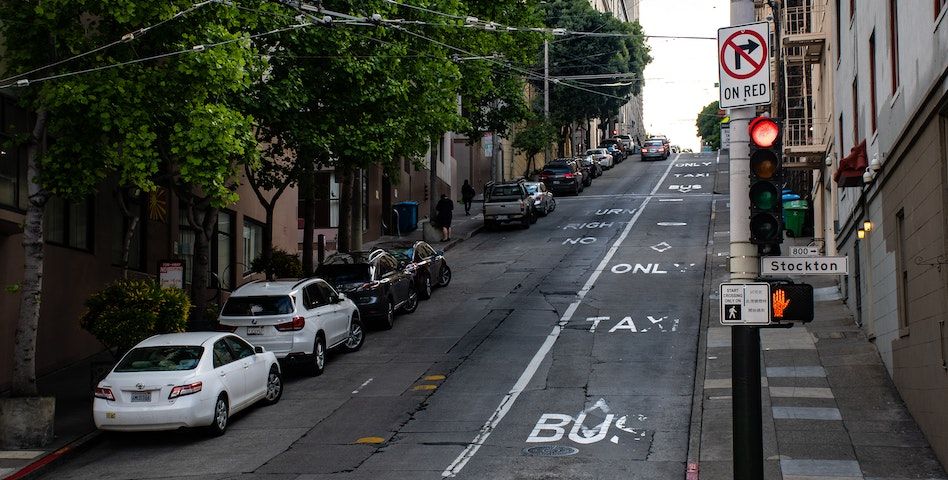What Are Major Differences in the Traffic Rules of America, England, and India?
Traffic rules are essential for maintaining road safety and ensuring the orderly flow of traffic. However, these rules can vary significantly from one country to another, depending on factors such as driving habits, road infrastructure, and local regulations. In this blog, we will explore the major differences in traffic rules between three countries: America, England, and India.
Driving on the Right vs. Driving on the Left
One of the most fundamental differences in traffic rules between these countries is the side of the road on which vehicles drive. In America, vehicles drive on the right-hand side of the road, with the driver's seat on the left side of the vehicle. In contrast, both England and India drive on the left-hand side of the road, with the driver's seat on the right side of the vehicle. This basic distinction affects not only the positioning of lanes but also rules for overtaking, roundabouts, and intersections.

Traffic Signals and Signage
While the colors and meanings of traffic signals are fairly standardized globally, there can be variations in their usage and placement. In America, traffic signals follow the standard red, yellow, and green color code. England and India also use the same color scheme, but there can be subtle differences in the sequence of lights, especially at pedestrian crossings and intersections.
Some more info!
Additionally, the design and layout of road signs and traffic signals may differ between these countries. For example, in England, you may encounter roundabouts with multiple exit lanes, each with its dedicated signage. In India, some traffic signs and signals may be bilingual, using both English and regional languages.
Speed Limits
Speed limits are another area where significant differences exist. In America, speed limits are typically posted in miles per hour (mph), with common limits on highways ranging from 55 mph to 75 mph, depending on the state. In England, speed limits are usually in miles per hour as well, with standard limits of 30 mph in urban areas and 60 mph on single-carriageway roads. India, on the other hand, uses kilometers per hour (km/h) for speed limits. Common speed limits on Indian roads include 40 km/h in urban areas and 100 km/h on expressways.
Traffic Priority
The rules regarding traffic priority can vary between these countries, especially at intersections and roundabouts. In America, the vehicle that arrives first or the vehicle to the right typically has the right of way at uncontrolled intersections. In England, vehicles on the major road generally have the right of way, while in India, it can often be a matter of asserting your position and proceeding cautiously, especially in crowded urban areas.
Not to forget:
Roundabouts also have their own set of rules. In England, vehicles inside the roundabout have the right of way, while in America, the opposite is true - vehicles entering the roundabout yield to those already inside. In India, roundabouts can be a chaotic mix of vehicles, with the concept of yielding not always strictly followed.
Lane Discipline and Overtaking
Lane discipline and overtaking rules can vary significantly between these countries. In America, there is a strong culture of staying within your lane, with clear lane markings and strict enforcement of lane discipline. Overtaking is typically done on the left.
Not to skip:
In England, lane discipline is also well-maintained, and overtaking is primarily on the right. However, on multi-lane highways, overtaking slower vehicles on the left is also acceptable under certain conditions.
In India, lane discipline can be more fluid, especially in congested urban areas. Overtaking can occur from both the left and right, often necessitated by traffic conditions rather than formal rules.
Use of Horns
The use of vehicle horns varies widely between these countries. In America and England, horn usage is generally discouraged, and drivers are expected to use their horns sparingly, primarily as a warning signal. In contrast, in India, honking is more prevalent and can serve various purposes, including expressing frustration, signaling intent, or simply as a way to navigate through crowded traffic.
Seat Belts and Child Safety
Seat belt and child safety regulations also differ. In America, seat belt usage is mandatory for all passengers in the vehicle, and child safety seats are required for young children. England has similar regulations, with seat belts mandatory for all passengers, and strict requirements for child safety seats based on age and weight.
In India, while seat belts are mandatory for front-seat passengers in most states, the rules for rear-seat passengers can vary. Child safety seat regulations are not as uniformly enforced, and the use of child safety seats is less common, especially in smaller towns and rural areas.
Driving License and Age Restrictions
Obtaining a driver's license and age restrictions vary in these countries. In America, the minimum age for a full, unrestricted driver's license varies by state but is typically around 18 years old. In England, the minimum age for a full car driving license is also 18.

In India, the minimum age for a full car driving license is typically 18, but learner's permits can be obtained at a younger age. Additionally, there are different age requirements for obtaining various types of licenses, such as two-wheeler and commercial vehicle licenses.
Conclusion: Adapting to Local Traffic Rules
Understanding and adapting to local traffic rules and regulations is crucial when driving in a foreign country. The differences in traffic rules between America, England, and India highlight the importance of being informed and aware of the rules and customs of the region you are driving in. Whether it's the side of the road you drive on, speed limits, or right-of-way rules, adhering to local traffic regulations is essential for safe and stress-free travel on the roads of any country.